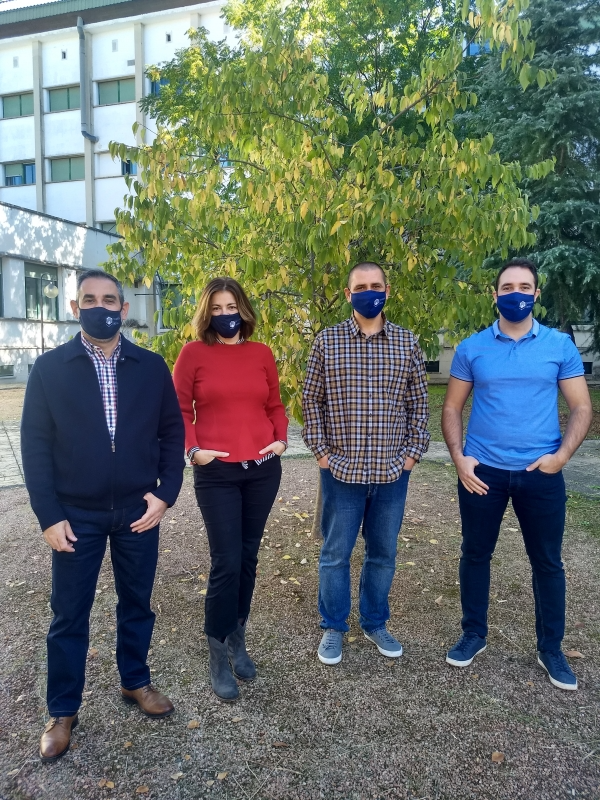Nov 10 2020
Cultural heritage is exposed to a range of external factors—such as rain, solar radiation, extreme temperatures, and humidity—that degrade it over time.
 University of Cordoba Research Team. Image Credit: University of Cordoba.
University of Cordoba Research Team. Image Credit: University of Cordoba.
The most vigorous of all such factors may be microbial contamination, which occurs due to a large ecosystem of bacteria, algae, fungi, and microscopic lichens that grow within the pores of the materials using which the buildings are made of. Moreover, they decrease the resistance of these buildings to other external agents, thereby accelerating the degradation process over time.
When historical monuments are restored, it is essential to employ tough materials that can resist such microorganisms. This task is complicated because the materials utilized in such restorations must comply with the original materials that are made of lime mortar, plaster, and stones like marble or limestone.
The latest study involved using cement and concrete, which are ruled out, as they do not comply with materials like lime mortar and could even worsen the issue.
A group of researchers from the University Research Institute into Fine Chemistry and Nanochemistry at the University of Cordoba (the FQM 214 and FQM 175 groups) and Seville’s Institute of Natural Resources and Agrobiology of the Spanish National Research Council (IRNAS-CSIC in Spanish) collaborated to make a biocide additive, similar to the one that kills microorganisms, which can be combined with materials utilized to reconstruct historic monuments and buildings.
The materials that contain these kinds of chemical compounds are widely used in restoration but their effectiveness usually lasts for a brief amount of time—about two years—since the external agents, in addition to deteriorating the material, end up weakening its biocidal properties.
Adrián Pastor, Study Researcher, University of Cordoba
This study is part of Pastor’s doctoral research for his thesis titled “New functional materials to decontaminate cultural heritage and urban habitats.” The study was conducted under the guidance of Dr. Luis Sánchez and Dr. Ivana Pavlovic, with a contribution from Dr. Manuel Cruz Yusta and Dr. Beatriz Gámiz (RNM 124).
In this study, the researchers tested hydraulic lime mortar to which they added carbendazim, a biocide compound used extensively in paint due to its low water solubility and is thus more resistant to water.
At the same time, the researchers compared the antimicrobial effectiveness of a lime mortar to which carbendazim was added directly with that of a lime mortar whose clay included an anchored biocidal compound.
Both the lime mortar samples were subjected to many microbiological tests to examine their potential to combat microorganisms and a leaching process, in which the material’s soluble parts are eliminated, thereby mimicking different rain cycles within a short period.
In the first microbiological test, we verified that the first mortar, to which we directly added carbendazim, had a somewhat greater biocidal capacity. However, after the leaching processes, we verified that the second mortar, that had carbendazim anchored to the clay, showed better results since the biocide compound was released more slowly and therefore, its effect is more long-lasting.
Adrián Pastor, Study Researcher, University of Cordoba
This introductory study needs additional research to get this material on the market, which implies a larger scale study, as well as analyzing the unique physical properties of the material to confirm that it complies with regulations concerning adhesion, durability, and other properties.
This research is part of the MATERPAT Project titled “New functional materials based on encapsulation techniques for the prevention, conservation and restoration of cultural heritage” (RTC-2015-3916-6), which is financially supported by the Ministry of Economic and Business Affairs.
Journal Reference:
Pastor, A., et al. (2020) Carbendazim-clay complexes for its potential use as antimicrobial additives in mortars. Building and Environment. doi.org/10.1016/j.buildenv.2020.107214.